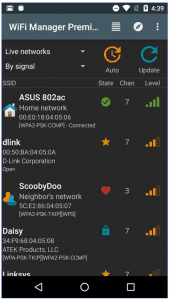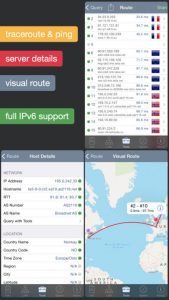Any links to online stores should be assumed to be affiliates. The company or PR agency provides all or most review samples. They have no control over my content, and I provide my honest opinion.
With the boom in streaming online content, and the majority of devices using WiFi it is essential to get the best performance possible out of your wireless network. One of the most annoying 1st-world problems is buffering or downgraded quality when you are streaming.
Many factors come into play with the WiFi speed, first of all, the actual speed of your internet, then the capabilities of the router itself. Some high-end routers like the D-Link DIR-895L are capable of delivering a theoretical 5.3 Gbps, which is faster than regular ethernet. Unfortunately achieving the speeds is unlikely as other factors come into play.
Distance from your router, obstacle in the way, and interference from other routers all affect the performance.
For users such as myself, in a large old house with thick walls, the speed will degrade very quickly, so it is often needed to have multiple routers in your home. This comes with its own set of issues, if you run everything using the same SSID, then devices can get confused about which router to access, and you need to carefully think about your Wifi network to make it work. With the advent of WiFi Mesh routers this issue eliminated, but if you don’t want to invest in a new technology choosing the correct channels for your WiFi is very important.
If you are buying new equipment, I would be inclined to ditch the super-fast single router option and go for a mesh network such as TP-Link Deco, Linksys Velop, Netgear Orbi or Ubiquiti Amplifi. Though this is dependant on the setting, in a small flat you may be better off with the fastest single router you can afford.
WiFi networks work on channels, and channels cross over each other if you have two routers connecting to channels close to each other than using the same SSID will be problematic. The routers themselves will theoretically work at reduced capacity too, as there is interference in the way.
Ideally, you will choose two networks on the opposite end of the spectrum, and I personally only use the same SSID on the 5GHz network which has far more channels.
If you want to optimise your network, I Wifi scanner will help, you can select the least congested channels and make sure there is no crossover with your routers.
WiFi Analyzer – Android

WiFi Analyzer will help you get a visual representation of your network’s channel as well as the best available channel you can use to get the optimum speed. When you launch the app, you will see a graphical representation of all the networks available in the area. The higher the graph, the stronger is the connection. However, this is just a visual representation, to know which channel you should tap on the eye icon and select channel rating. There you will see the list of all the channels with star ratings attached to it.
NetX – Android
This is a good option as it has one of the best user interfaces. You can see all the networks around you in a graph mode or rating mode, whichever meets your needs.
WiFi-Manager – Android
This is more to manage your Wifi on the device, but it is a worthy option, you can still scan the network and find out the signal strength. What I like about it is that if you use multiple SSID, you can have it automatically connect to the strongest option
Network Analyzer -iOS
Since iOS does not allow apps to access its WiFi connection chip, there’s only a limited amount of functions that a WiFi analyser app can perform. The best app on iPhone to analyse your WiFi connection is the Network Analyzer.
TP-Link Deco, Linksys Velop, Netgear Orbi or Ubiquiti Amplifi. Though this is dependant on the setting, in a small flat you may be better off with the fastest single router you can afford.
I am James, a UK-based tech enthusiast and the Editor and Owner of Mighty Gadget, which I’ve proudly run since 2007. Passionate about all things technology, my expertise spans from computers and networking to mobile, wearables, and smart home devices.
As a fitness fanatic who loves running and cycling, I also have a keen interest in fitness-related technology, and I take every opportunity to cover this niche on my blog. My diverse interests allow me to bring a unique perspective to tech blogging, merging lifestyle, fitness, and the latest tech trends.
In my academic pursuits, I earned a BSc in Information Systems Design from UCLAN, before advancing my learning with a Master’s Degree in Computing. This advanced study also included Cisco CCNA accreditation, further demonstrating my commitment to understanding and staying ahead of the technology curve.
I’m proud to share that Vuelio has consistently ranked Mighty Gadget as one of the top technology blogs in the UK. With my dedication to technology and drive to share my insights, I aim to continue providing my readers with engaging and informative content.















You may also have a look at the newer analiti WiFi analyzer and tester for Android.
Much more information about the WiFi signals around you (including the WiFi technology such as N or AC, or the MIMO capabilities) as well as automatic speed testing.